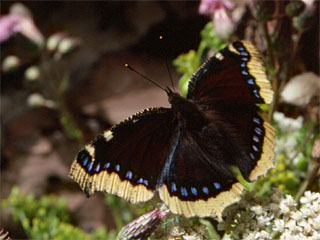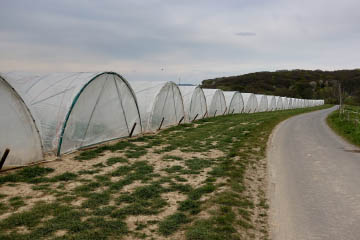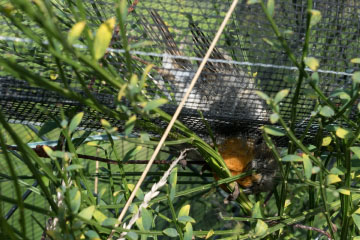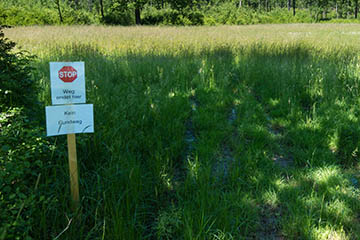 Camberwell BeautyNymphalis antiopa (Linnaeus, 1758)Mourning CloakCamberwell Beauty
Camberwell BeautyNymphalis antiopa (Linnaeus, 1758)Mourning CloakCamberwell Beauty
Camberwell Beauty (Nymphalis antiopa)
[Breeding image]
Breeding: Dieter StüningDieter Stüning
The following protective measures can ensure the preservation of the  Camberwell BeautyNymphalis antiopa (Linnaeus, 1758)Mourning CloakCamberwell Beauty and promote its spread. Provided that the climatic conditions are generally suitable for the
Camberwell BeautyNymphalis antiopa (Linnaeus, 1758)Mourning CloakCamberwell Beauty and promote its spread. Provided that the climatic conditions are generally suitable for the  Camberwell BeautyNymphalis antiopa (Linnaeus, 1758)Mourning CloakCamberwell Beauty:
Camberwell BeautyNymphalis antiopa (Linnaeus, 1758)Mourning CloakCamberwell Beauty:
- Reduced use of insecticides so that the important food source fallen fruit is not contaminated.
- Adjustment of cleansing of forest edges. Regrowth of fringes in a natural way (e.g. with Goat WillowSalix capreaPussy WillowGoat Willow).
- Natural development of the forest, which preserves tree hollows, for example, which are used for hibernation.
Potential improvements with regard to the loss of habitats are:
- Stopping the destruction of natural areas.
- Areas that have already been destroyed, e.g. meadows or moors, should be restored or renaturalised.
- Areas that are already protected should, it may sound paradoxical, be better protected. This could include, for example, fencing off as protection against land destruction by humans and animals.
- Areas that are already protected should, if possible and sensible, be specifically assigned a certain biotope type through maintenance measures (e.g. through scrub clearance and/or planting measures).
- Existing natural areas should be extensively connected with natural corridors. These corridors allow certain species (flora and fauna) to change their location. Because natural areas (e.g. nature reserves) are often comparatively small, this can prevent genetic impoverishment or enable recolonisation following the local extinction of a species.
- Commercial forest management should develop into sustainable forest management that promotes biodiversity. If humans intervene, then they should not do so primarily to maximise financial gain, but to achieve the best possible coexistence between humans and nature. The example of the (former) spruce monocultures in German forests shows very clearly the consequences of the previous form of forest management in
 Germany
Germany Germany. In view of the fact that wood is currently an irreplaceable raw material for us, this is of course no easy task.
Germany. In view of the fact that wood is currently an irreplaceable raw material for us, this is of course no easy task. - A change in values must take place in our society: What is more important to us? An intact, robust natural environment that provides our livelihood in the long term or unrestrained consumption and acquisitiveness? Do we need cars that are as fast and powerful as possible, countless trips to distant regions and always the latest (actually superfluous) consumer goods? Would we rather enjoy the beauty of a blooming natural meadow or a varied forest or is a classy-looking smartphone more important to us?
Potential improvements with regard to the introduction of environmental toxins:
- Stop the introduction of environmental toxins into nature!
- Detoxification of already contaminated areas.
A good example of the destruction or devaluation of natural areas is the cultivation of strawberries:
In  Germany
Germany Germany, the conditions for strawberries are ideal. In our latitudes, the fruit ripens naturally into delicious red strawberries during the summer months. Local varieties that have not been bred for robustness and shelf life for days of transport often taste better than varieties that can withstand long transport.
Germany, the conditions for strawberries are ideal. In our latitudes, the fruit ripens naturally into delicious red strawberries during the summer months. Local varieties that have not been bred for robustness and shelf life for days of transport often taste better than varieties that can withstand long transport.
Do we really need strawberries from the Mediterranean in  Germany
Germany Germany? In the south of
Germany? In the south of  Spain
Spain Spain, huge natural areas have been replaced by countless greenhouses just so that we can buy strawberries in
Spain, huge natural areas have been replaced by countless greenhouses just so that we can buy strawberries in  Germany
Germany Germany for large parts of the year and as cheaply as possible.
Germany for large parts of the year and as cheaply as possible.
Folientunnel für Erdbeeranbau in Wachtberg
Eine Reihe Folientunnel für den Erdbeeranbau in Wachtberg bei Bonn. Der Boden ist vor den Tunneleingängen stark verdichtet und in Mitleidenschaft gezogen, vermutlich durch Maschinendruck.
Is it really unreasonable for us to wait for the warm summer and the delicious fresh strawberries that are then available? Then we would appreciate this natural product much more and would probably be prepared to pay a little more for the rarer treat!
Does cultivation have to be carried out in closed film tunnels just so that we can buy locally grown strawberries in April? Of course, this saves on transport from distant countries and reduces the use of pesticides, but the areas are largely lost as natural areas, and are in any case significantly lower in value.
Many of us are familiar with the shreds of plastic film used in agriculture that fly over fields and hang in bushes.
On this topic, see for example the online article General Anzeiger Bonn (Online): Folientunnel sichern regionale Ernte - Erste Erdbeeren reifen in Wachtberg
It is not the strawberry farmers who are to blame for this state of affairs. It's us consumers who thoughtlessly grab whatever is on offer in the supermarket and want to spend as little as possible on it.
Other forms of nature management can also have negative effects.
Hail protection network in the Wachtberg fruit-growing area
The net stretched over the fruit trees to protect against hail had a large open area downhill. Insects and birds flew in through it. However, there was no exit on the uphill side; instead, the net ran narrowly at the highest point of the hill and ended in a narrow band. Huge numbers of insects (especially butterflies, dragonflies, flies, wasps and hornets) and even a robin were unable to free themselves from the net and died.
Dead Robin (Erithacus rubecula) in a hail protection net in the Wachtberg fruit-growing area
The Robin (Erithacus rubecula) had become entangled in a hail protection net stretched over fruit trees and had died. Due to careless installation, the net had become a deadly trap for a huge number of insects, including this Robin (Erithacus rubecula).
Not far from the above-mentioned foil tunnel, I found a field in autumn 2022 where a huge net was stretched over the fruit trees to protect them from hail.
The field is on a slope and the net had an opening at one point down the slope. Insects and birds flew in through this opening. However, there were no other openings. Worse still: at the end of the field up the slope, the net converged in a funnel shape and then ended in a narrow band of two nets lying directly next to each other. Lots of insects and even an RobinErithacus rubecula (Linnaeus, 1758)European RobinRobin RedbreastRobin died at this point.
After immediately reporting the problem to the nature conservation authority, the problem was rectified by the fruit grower a few days later, according to their statement. For me, however, the thoughtlessness of the fruit grower when installing the net was frightening. He must also have seen the problem himself. But he didn't fix it on his own initiative. For whatever reason.
In 2021, I experienced for myself in a nature reserve in Franconia that it is (unfortunately) also necessary to protect areas that are already protected.
Notice of a ban on entering a nature reserve in Lower Franconia
Areas of the nature reserve were protected with various measures:
- Signs indicating that it is a nature reserve.
- Signs indicating the end of a path or a no-entry zone.
- By cordoning off parking spaces with flutter tape (a road authorised for vehicle traffic runs through the nature reserve).
- By cordoning off areas with flutter tape, supplemented by signs stating that the areas may not be entered.
I spent two days cycling through the nature reserve and wanted to enjoy the flora and fauna there. But I also wanted to take a few nature photos. Somewhat unexpectedly, although it wasn't a weekend, it was very busy. It was obviously not an insider tip. Most of the visitors were equipped with cameras and/or binoculars.
Many adhered to the communicated rules and set up their binoculars from the path or took their pictures from there.
But there were also visitors who deliberately disregarded the unusually clearly communicated rules: Cars were deliberately parked in the restricted areas, flutter tape was disregarded or destroyed.
A car had pushed the tape to one side with its bodywork. A man dressed in camouflage colours got out of it, holding a camera with a lens the length of a forearm.
Just two minutes later, on the other side of the road, a man and a woman crossed a barrier, both with compact cameras in their hands. Although there was a notice attached to the tape that could not be overlooked, it clearly indicated that it was forbidden to pass through.
With such brazenness, what alternative is there but to completely fence off areas worthy of protection? However, the problem then arises that the area is also no longer accessible to some animal visitors.








